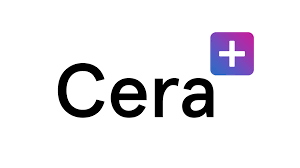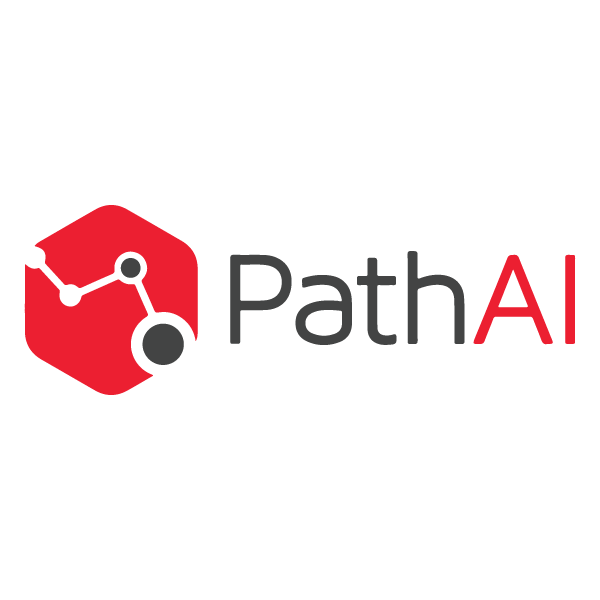AI is driving innovation across the healthcare sector. As technology progresses, AI is being increasingly integrated into clinical care, diagnostics, and operational processes, transforming how healthcare providers deliver their services.
In 2025, we are seeing a clear shift from experimentation with AI to implementation. Healthcare providers are embracing AI-driven healthcare innovation and moving beyond pilot projects to adopt AI tools at scale.
This article highlights some of the leading AI in healthcare providers at the forefront of this transformation. These providers are using AI strategically to enhance their services, streamline their workflow, and deliver more responsive, data-driven care.
How Do Healthcare Providers Use Artificial Intelligence to Enhance Patient Care?
The healthcare industry employs AI technologies, such as natural language processing, deep learning, and machine learning, to enhance efficiency, improve diagnostics, and streamline patient care. These tools enable healthcare professionals to better analyze and organize patient data, support more accurate diagnoses, and deliver personalized treatment plans tailored to individual needs.
Here are some of the key ways that healthcare organizations are implementing AI tools across their services:
Improving Medical Diagnosis and Disease Detection
AI algorithms, particularly deep learning models, are revolutionizing medical diagnosis and disease detection. By meticulously analyzing medical images such as X-rays, MRIs, and mammograms, as well as medical history records, these technologies help to enhance diagnostic accuracy. This advancement is particularly important in conditions such as breast cancer, Alzheimer’s disease, and cardiovascular conditions, where early-stage detection is paramount to achieving better health outcomes.
Streamlining Electronic Health Records and Reducing Administrative Burdens
AI systems automate repetitive administrative tasks such as health data entry, leading to enhanced accuracy and freeing up clinicians’ valuable time for patient-centered activities. These tools also help to manage and extract crucial information from complex clinical data, providing actionable insights for diagnosis and treatment.
Embrace Personalized Medicine
Through analyzing patient-specific data, AI supports precision medicine, allowing healthcare providers to tailor treatments based on an individual’s unique health concerns, as well as their biomarker profiles, lifestyle, environmental factors, and genetics.
Support Population Health Management
As AI tools analyze data at scale, they can be used to track health trends, monitor outbreaks, and support decision-making for public health strategies. These insights are essential to organizations such as the World Health Organization that help to manage the health of large populations.
Boost Patient Engagement with Virtual Assistants
To significantly boost patient engagement and experience, healthcare providers take advantage of virtual health assistants. These can answer routine questions, help with appointment scheduling and remind patients to take their medication.
Reduce Healthcare Costs
By optimizing efficiency, minimizing waste and errors, and optimizing resource allocation, AI technologies continue to reduce costs across the whole of the healthcare sector.
Accelerate Drug Discovery and Optimize Clinical Trials
In addition to transforming day-to-day medicine, AI models are also revolutionizing the drug development process and significantly speeding up clinical trials. AI excels at identifying novel drug targets by pinpointing critical biological pathways and proteins that can be precisely manipulated for therapeutic benefit. When it comes to clinical trials, AI helps to optimize protocol design, streamline data collection, and enhance analysis, significantly speeding up the trial process and reducing costs.
Top Companies Using AI Technology to Reshape Health Care in 2025
So, which healthcare organizations are leading the way? Here are some of the top providers embracing AI to deliver smarter, faster, and more effective care in 2025:
#1: Tempus
About Tempus:
Tempus is a leader in AI-powered precision medicine, with a strong focus on oncology, neurology, psychiatry, cardiology, dermatology, and radiology. Their platform uses real-world clinical, molecular, and genomic data to allow healthcare professionals to diagnose conditions with more accuracy and devise personalized treatment recommendations that are tailored to each patient’s unique profile.
Advantages:
- Precision Oncology: Analyzes tumor genomic data to identify mutations and biomarkers, guiding targeted therapies.
- Comprehensive Data Integration: Combines clinical, molecular, and patient health records for deeper insights.
- Drug Development & Clinical Trials: Uses AI, alongside a vast library of clinical data, to identify novel drug targets and optimize the drug development process.
- Scalable Platform: Enables healthcare providers to apply precision medicine across various specialties.
Disadvantages:
- Implementation Complexity: Integrating advanced AI tools into existing healthcare systems may require significant resources and training.
- Data Privacy Concerns: Handling extensive genomic and clinical data necessitates stringent compliance with privacy regulations.
Target Audience:
Healthcare providers and research institutions seeking to integrate AI-driven precision medicine into everyday healthcare delivery, particularly within the field of oncology and other complex specialties.
#2: Cera
About Cera:
Cera is a UK-based healthcare provider that is transforming home care through the use of AI technology. It uses machine learning and data analytics to monitor patients remotely, anticipate health deteriorations and potential health risks, and automate their care planning, with the aim of reducing hospitalizations in patients with chronic diseases.
Advantages:
- Proactive and Preventative Care: Cera’s deep learning algorithms help to flag early signs of illness and predict potential health risks or deterioration, enabling timely intervention and reducing hospital admissions.
- Remote Patient Monitoring: The app-based platform uses AI tools to analyze real-time health data from in-patient home visits, which includes things like heart rate, temperature and blood pressure, as well as other health indicators such as sleep patterns and activity levels. This data can then be used to detect whether a patient’s condition is worsening so that health professionals can respond appropriately.
- Enhanced Medication Management: The technology can be used to enhance medication adherence by sending reminders and tracking intake, significantly reducing errors and improving patient safety at home.
- Support of Caregivers: Cera automates administrative tasks, including rostering and care documentation, freeing up staff to focus on delivering hands-on care.
Disadvantages:
- Integration Challenges: Cera relies on high-quality, consistent data input from both carers and their patients, which can be difficult to standardize at scale.
- Maintaining Human Touch: Cera’s extensive use of AI and automation, while efficient, requires careful management to ensure that the essential human element of compassionate care isn’t diminished, especially for vulnerable patients.
- Data Privacy & Trust: Handling sensitive health data in a highly integrated system requires strict cybersecurity and transparent data usage policies.
Target Audience:
Cera’s platform is ideal for national health systems, local authorities, and private care providers who are looking to use AI to modernize home healthcare services and to ease pressure on hospitals.
#3: PathAI
About PathAI:
PathAI, which is a Boston-based company, uses AI-powered technology to transform the workflow within biopharma and pathology laboratories. By applying deep learning to vast datasets of digital pathology images, PathAI is enabling more precise disease diagnosis, accelerating drug development, and uncovering novel biomarkers, ultimately pushing the boundaries of precision medicine in areas such as oncology and inflammatory diseases to improve patient outcomes.
Advantages:
- Improve Diagnostic Accuracy: PathAI’s deep learning models have demonstrated high accuracy in detecting malignancies and other diseases on pathology slides, often matching or surpassing the performance of experienced pathologists.
- Optimize Workflow: AI tools such as TumorDetect automate tumor assessment and quantification, enabling pathologists to focus on the most critical cases and reduce their turnaround times.
- Seamless Integration: PathAI’s technology can integrate seamlessly into existing lab software, without the need for major system overhauls or lengthy onboarding.
- Continuous Learning: PathAI’s machine learning algorithms continuously improve over time, adapting to new data so that they align with evolving diagnostic standards.
Disadvantages:
- Initial Setup Complexity: Implementing PathAI’s solutions may require significant time and resources for setup and training.
- Dependence on Data Quality: The accuracy of any analysis is highly dependent on the quality of data input into the system, so if you have poor-quality pathology slides, then this can affect performance.
- Cost Considerations: The platform may be expensive for smaller laboratories or institutions with limited budgets.
Target Audience:
- Pathologists looking to improve the efficiency and accuracy of their work
- Large laboratories and medical institutions with high diagnostic workloads
- Researchers looking for advanced AI tools to aid in pathology and medical research
#4: Butterfly Network
About Butterfly Network:
Butterfly Network has developed an AI-powered handheld ultrasound device that connects to a smartphone, bringing high-quality imaging directly to the point of care. This portable ultrasound system is practical for use even in diverse settings, such as remote communities, making diagnostic imaging more accessible than ever. Their devices make use of advanced AI algorithms to automate image capture and analysis, including rapid and accurate B-line counting from a six-second lung ultrasound clip (used in lung ultrasounds to assess fluid build-up), enhancing on-the-spot assessment of lung conditions.
Advantages:
- More Precise Disease Diagnosis: Real-time, AI-assisted image analysis enhances diagnostic accuracy.
- Improved Accessibility to Ultrasound Imaging: Portable and smartphone-compatible, enabling versatile use in diverse settings.
- Simplified Imaging Workflow: Automates complex imaging tasks, reducing operator dependency.
Disadvantages:
- User Training Needed: While AI assists with image acquisition, proficient interpretation of the ultrasound images still requires significant user training and clinical experience.
- Reliance on Good Connectivity: Optimal functionality of the devices and integration of data rely heavily on stable smartphone connectivity, which can be a limitation in extremely remote or underdeveloped areas.
- Diagnostic Scope Limitations: Despite its advancements, the handheld device may not fully replace the advanced capabilities or specialized probes of traditional ultrasound systems for certain complex or in-depth diagnostic needs.
Target Audience:
- Healthcare providers needing mobile imaging solutions
- Clinics and emergency services in remote regions
- Medical professionals seeking AI solutions to improve ultrasound diagnostics
#5. XpertDox
About XpertDox:
Based in the U.S, XpertDox uses AI to automate medical coding, helping healthcare providers to speed up billing and reduce errors. Their flagship tool, XpertCoding, automatically pulls the right billing codes from clinical documents, helping hospitals and clinics to speed things up, cut down on admin errors, and get reimbursed faster.
Advantages:
- Fast and Efficient: XpertCoding processes and submits medical claims within 24 hours, reducing manual effort and accelerating the billing process. It also automates approximately 94% of claims without human intervention, reducing the need for manual coding.
- High Accuracy: The platform achieves over 98% coding accuracy, minimizing claim denials and enhancing compliance.
- Seamless EHR Integration: The XpertCoding platform can seamlessly connect with any existing EHR system.
- Business Intelligence Platform: Their Business Intelligence Platform provides real-time analytics, audit trails, and Clinical Documentation Improvement (CDI) feedback to optimize operational efficiency.
Disadvantages:
- Initial Setup Requirements: While integration is streamlined, initial setup and training may require dedicated resources to ensure optimal utilization.
- Reliance on Accurate Data: The effectiveness of the system relies heavily on the clarity and completeness of the clinical data and medical records that are input. Any incomplete notes or ambiguity can pose challenges.
Target Audience:
Hospitals, large multi-specialty clinics, healthcare systems, and third-party billing companies that are focused on optimizing their revenue cycle management.
Artificial Intelligence in Healthcare: What’s Next?
AI has already made a huge impact on healthcare, from improving diagnostics and speeding up drug discovery to personalizing patient care, but we’re only just scratching the surface.
As AI tools become more advanced and datasets more diverse, the potential for AI to transform everything from mental health care to surgical planning is enormous. As we progress, we can expect to see even more collaboration between AI companies and healthcare providers, as well as stronger safeguards to tackle data security.
Do you need a reliable way to build and scale your AI healthtech application? Atlantic.Net offers fast, secure GPU cloud hosting, ideal for building, training, and deploying your AI models.




